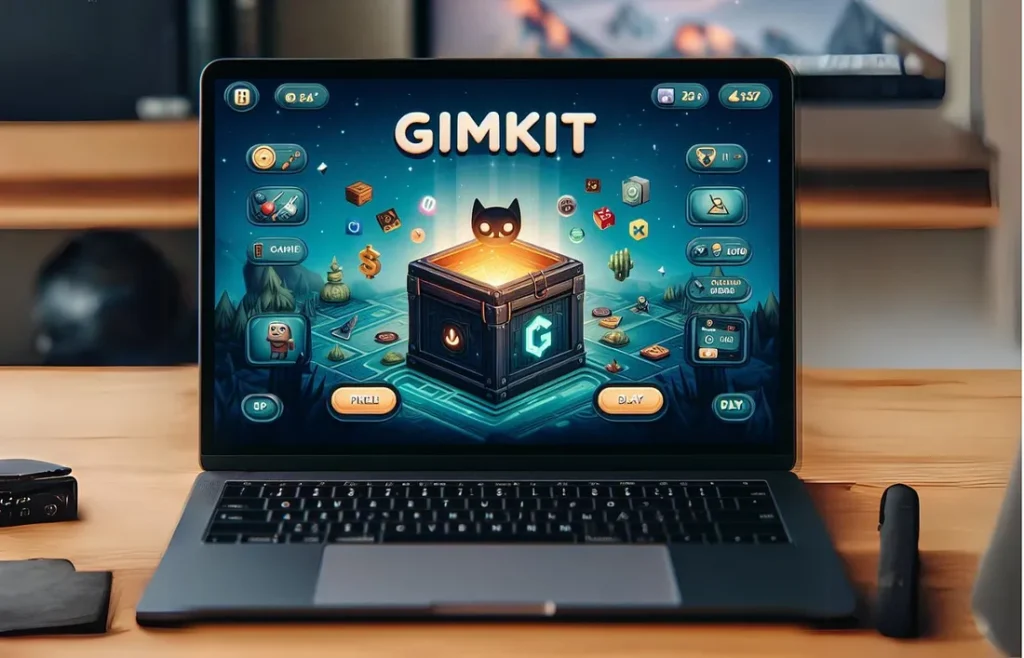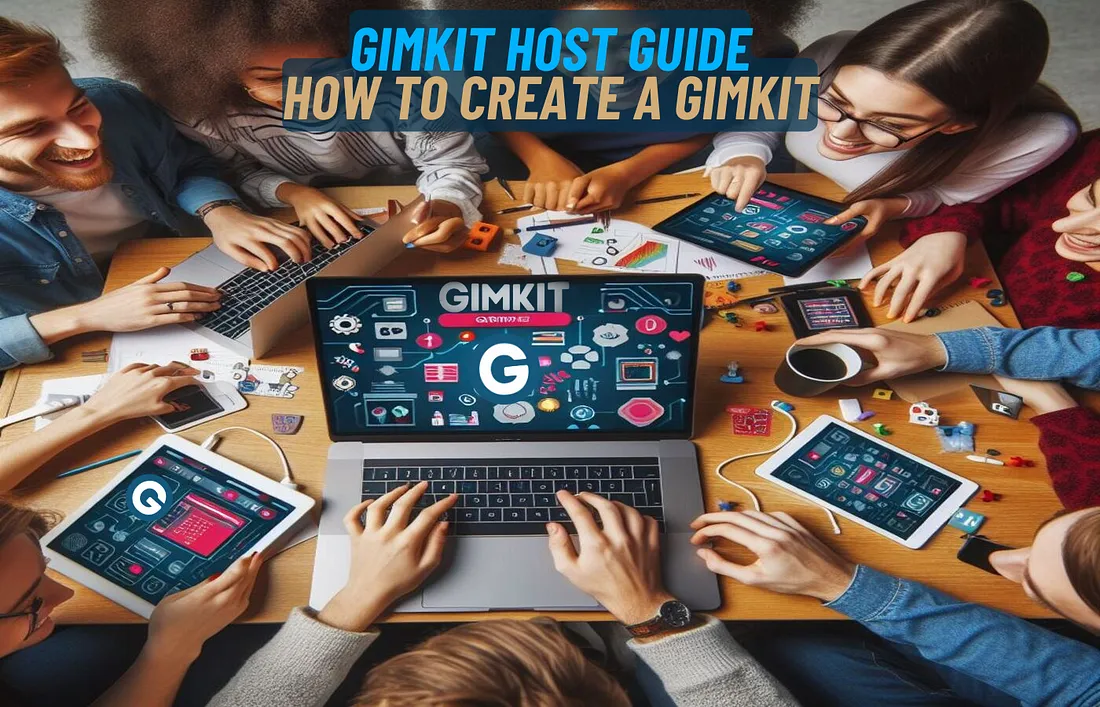Gimkit is an interactive learning platform that combines game mechanics with educational content, allowing educators to engage students effectively. The key to maximizing the potential of Gimkit lies in the role of the host, who facilitates gameplay, manages settings, and encourages student interaction. This pivotal position can enhance the learning experience while making it more enjoyable.
By serving as a host, an educator can customize the game to fit their lesson plans, encouraging students to participate actively. The host also has the ability to monitor progress and provide immediate feedback, which is crucial for student development. Engaging students in this way fosters a dynamic classroom environment that promotes both competition and collaboration.
For those new to Gimkit, understanding the responsibilities and strategies of a host can significantly impact gameplay outcomes. This post will explore the essential functions of a Gimkit host and provide insights on how to optimize the hosting experience for better student engagement and learning effectiveness.
Overview of Gimkit
Gimkit is an innovative educational tool designed to enhance learning through interactive quizzes and games. It focuses on engaging students while facilitating effective knowledge retention. The following subsections detail its conception and development, along with its standout features.
Conception and Development
Gimkit was created by high school student Nate Gonzalez to provide a more engaging learning experience. The platform aims to blend education with entertainment by incorporating gaming mechanics into quizzes.
It gained traction quickly after its launch in 2017, rapidly evolving based on user feedback. Teachers appreciated its interactive approach, prompting the development of various functionalities. The platform now caters to diverse subjects and personalized learning needs. By collaborating with educators, Gimkit has adapted its features for classroom settings, aiming to improve student engagement and assessment.
Main Features
Gimkit offers a range of features that set it apart from traditional learning tools. One notable component is its Game Modes, allowing students to work individually or in teams. This flexibility fosters collaboration and competition.
Real-time Feedback is another essential feature. It enables students to understand their performance immediately. Educators can track progress through detailed analysis and reports.
Customization options are also available. Teachers can create quizzes or modify existing ones to suit their curriculum. Additionally, Gimkit’s currency system rewards students, incentivizing participation and reinforcing learning. The points they earn can be spent within the game for enhancements, ensuring a dynamic learning experience that promotes engagement.
Getting Started with Gimkit
To utilize Gimkit effectively, users must first create an account and set up their initial game. Each step is straightforward, making it accessible for educators and players alike.
Signing Up for an Account
Creating an account on Gimkit is a simple and quick process. Interested users can visit the Gimkit website and click on the “Sign Up” button.
They can choose to register using an email address or connect through Google or other available options.
After providing the necessary information, users need to confirm their email address to activate their account. Once activated, they can log in and start exploring the platform. Gimkit offers various features tailored for educators, including the ability to create personalized game content and track student progress.
Setting Up Your First Game
Setting up a game in Gimkit is an engaging experience. After logging in, users can select “Create a Game” from the dashboard.
They can choose from existing question sets or create their own.
To create a game, they simply input questions and answers, ensuring clarity for players. It’s possible to customize settings, like time limits and point values. Once the setup is complete, users can share the game code with participants, allowing them to join easily on any device.
Gimkit’s interface enables real-time monitoring of player performance during gameplay, adding an interactive element that enhances learning.
Hosting a Game on Gimkit
To host a game on Gimkit, a user needs to follow specific steps that streamline the experience. Concentrating on launching a session, customizing game settings, and managing participants ensures a smooth gameplay atmosphere.
Launching a Session
Launching a session on Gimkit begins with selecting a game mode. Users can choose from modes such as Classic, Team Mode, or Infinity. Each mode caters to different play styles and group dynamics.
After choosing the mode, the host can pick a game from their library or create a new one. Once selected, the host generates a unique game link or code that participants will use to join. It’s essential to share this with everyone before starting. This step sets the stage for ensuring all players are prepared and able to engage.
Customizing Game Settings
Customizing game settings is vital for tailoring the experience. The host can adjust options such as time limits for each question, the number of questions, and point values.
Additionally, users should consider enabling power-ups to enhance gameplay. These features create exciting dynamics and keep participants engaged. Another option includes choosing whether to allow players to see answers after each question, helping with learning and retention.
Hosts can also decide if participants compete individually or in teams, impacting the level of interaction. Setting these parameters allows the game to accommodate various educational objectives and participant preferences.
Managing Participants
Managing participants effectively is crucial for a well-run game. The host can monitor player progress using real-time analytics. This feature helps in identifying players who may need additional support or encouragement.
Participants can also be added or removed during a session if unexpected changes occur. Hosts should encourage active participation by engaging with players and providing feedback.
Utilizing features like chat options or raising hands can further enhance communication. By keeping the flow of interaction seamless, the host can maintain energy and excitement throughout the game.
Game Modes and Kits in Gimkit
Gimkit offers various game modes and customizable kits that enhance the learning experience. These features allow educators and players to engage in different styles of gameplay, catering to various learning objectives.
Exploring Different Game Modes
Gimkit presents several game modes to suit different educational needs. Among the popular options are Classic, Battle Royale, and Team Mode.
- Classic Mode: Players answer questions individually. The focus is on personal scores and speed.
- Battle Royale: This multiplayer format allows players to compete head-to-head, adding excitement. Players can knock each other out by answering questions correctly.
- Team Mode: participants collaborate in groups. This promotes teamwork and shared learning experiences.
Each mode fosters engagement, letting players choose how they want to learn and interact with content.
Creating Custom Kits
In Gimkit, instructors can create custom kits tailored to specific topics or learning objectives. This feature allows for the personalization of educational content.
- Question Types: Kits can include various question types like multiple-choice, true/false, or open-ended.
- Media Integration: Users can enrich questions with images and videos to enhance understanding.
- Shared Access: Educators can share kits with colleagues or the broader Gimkit community for collaborative use.
Creating a custom kit ensures that the gameplay aligns with curricular goals and resonates with students’ interests.
Best Practices for Gimkit Hosts
Successful hosts create an engaging and smooth experience for participants. They use specific strategies and are prepared to troubleshoot any issues that arise during gameplay.
Engagement Strategies
To maintain interest, a host should incorporate various engagement strategies throughout the game. Starting with an icebreaker question can create a fun environment.
Additionally, frequent interaction with players helps to boost energy levels. For instance, asking participants how they feel about the game or their answers can foster a sense of community.
Incentives like virtual rewards for top players can motivate participants to stay focused. Hosts should also encourage collaboration, allowing players to work in pairs or teams to solve some questions.
Timing is crucial; hosts should consider adjusting the game duration based on the participants’ age and attention spans, keeping sessions lively and within manageable limits.

Troubleshooting Common Issues
Technical issues can disrupt the flow of a Gimkit game. A reliable internet connection is essential for smooth gameplay. Hosts should test the connection beforehand and have a backup plan, such as a secondary device if needed.
In case players experience difficulties joining the game, clear instructions on accessing the platform are vital. A host should be ready to assist participants with account issues, ensuring that each player can join without frustration.
If questions arise about game mechanics or rules, the host should be prepared to clarify these promptly. Establishing clear communication channels and providing a brief tutorial can reduce confusion.
Additionally, if participants encounter any errors during the game, having a troubleshooting guide handy can help the host address these problems quickly. Preparedness enhances player experience.
Conclusion
Gimkit host plays a crucial role in enhancing the learning experience. By facilitating engaging quiz-based games, hosts can maintain student interest and encourage participation.
Key benefits of being a Gimkit host include:
- Interactive Learning: Students actively engage in quizzes, which aids retention of information.
- Customizability: Hosts can create tailored content to meet specific educational goals.
- Real-Time Feedback: Instant results help students identify areas for improvement.
The platform provides various tools, such as multimedia questions and different game modes. These features enrich the educational environment.
Effective hosting requires clear instructions and the ability to manage game dynamics. A skilled host can foster a competitive yet supportive atmosphere.
Utilizing Gimkit can transform traditional education into a fun and interactive experience. This aligns with modern approaches to teaching that emphasize active participation.
In turn, students benefit from a deeper understanding of subjects and improve their collaboration skills. Educational advancements continue to highlight the importance of engaging hosts within digital platforms.
